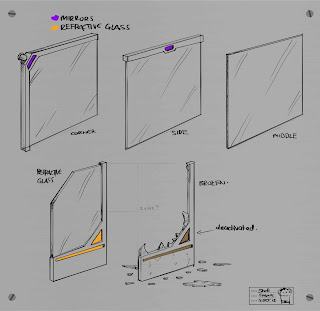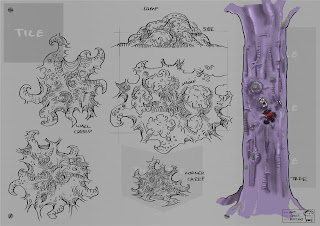It's one of the most tedious things i've done, I think. The results are nice, though.
I started with Level 3, as it is the most complex and difficult level we have and more time is needed for it.
I begin by laying out the basic tiles to get a sense of the shape and scale of the level and each room. Of course, I'm following my floor plans as I do this.
Problem faced: Since the tiles are snapped to each other, one offset tile can really mess up the rest of the level. Overlapping faces and tiles that don't follow the grid is a huge pain to fix.
I take things slowly (not too slow, I hope) and systematically. Everything is put into layers and I try to keep things simple. The room above is for the Aegis. The boss fight takes place here. As you can see, I build it level by level. When I begin propping each level, I can just turn off the visibility of other floors to make life easier for me.
Problem Faced: Making levels takes a lot longer than I anticipated. I always underestimate the amount of time it takes. I tell my group, "I'll be done with this level in 2 weeks."
Two weeks later, I'm like, "Fuuuuuuuuck, I'm not even halfway done."
I work more than 9 hours everyday and a couple of hours on weekends, mind you. It's still not enough. We only have 3 months to finish this game and I fear we may be running out of time.
This is only about half of the 3rd level. To give you a sense of scale, he player is about half a tile wide.
Thanks for reading.
Shafi





















































